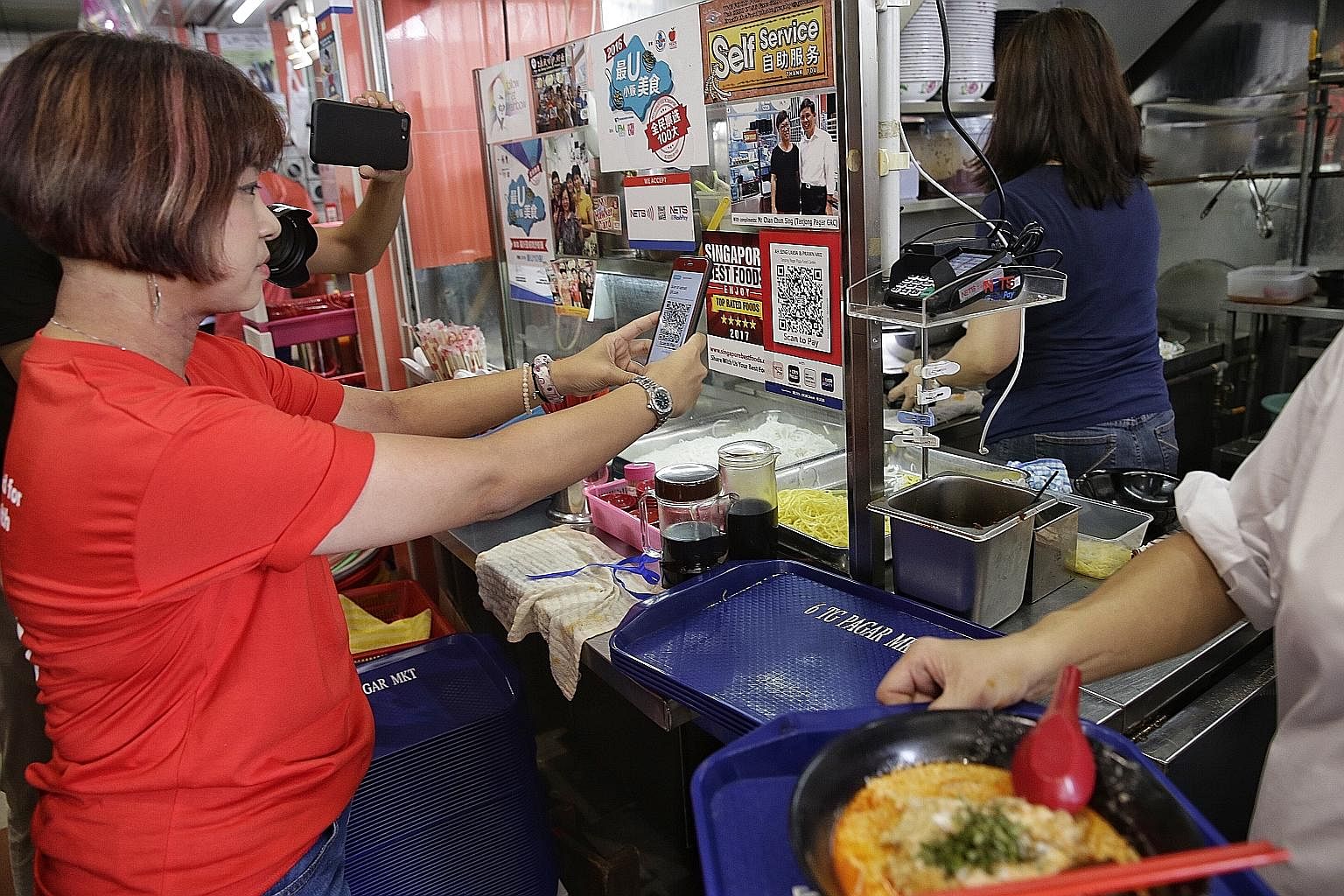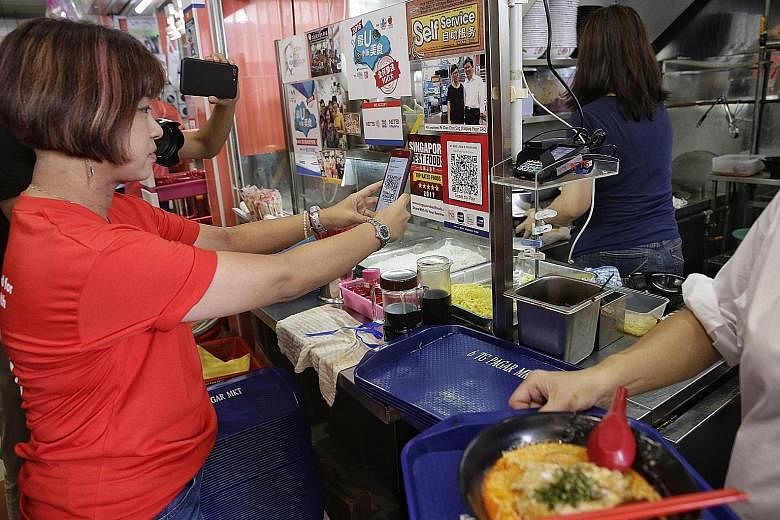Publicity machines have been working themselves into a frenzy since Prime Minister Lee Hsien Loong spoke about Singapore's need for a unified cashless payment system at the National Day Rally on Aug 20.
Companies are announcing new payment solutions, adding them to the already crowded e-payment space. But these solutions offer little to address the issue at hand: Unite the existing fragmented systems.
The unintended outcome? Confusion reigns and people tune out the "noise".
Over the last two months, ride-hailing app firm Grab and tech firm Razer were not the only ones that pounced on the opportunity for publicity.
Last week, online marketplace Qoo10 joined the chorus, saying it wanted its QR code payment system, dubbed QPay, to become the most widely used cashless payment system in Singapore.
Also last week, e-payment stalwart Nets launched its NetsPay app, which saves a digital version of people's ATM cards. The app allows users to tap their mobile phones on a contactless payment reader or scan a QR code to pay for goods.

Inundated with such news, some consumers are tuning out. Describing it as "noise", marketing manager Selina Ang, 41, said: "It's getting more confusing."
She said she will stick to what is tried and tested for now: AliPay for her Taobao purchases online, GrabPay for car rides, and the traditional plastic cards and cash.
Not even NetsPay could convince her to venture beyond these options. "I will wait for my friends to recommend the safest and most convenient option," she said.
At launch, NetsPay works for users of the seven million ATM cards issued by DBS Bank and POSB.
It is also expected to work with the ATM cards of five other banks - OCBC Bank, United Overseas Bank, HSBC, Maybank and Standard Chartered Bank - in the coming weeks, potentially making NetsPay the most widely accepted mobile wallet in Singapore.
NetsPay seems like a promising unifying solution as it does not encumber users with the need to download multiple mobile apps.
It will also provide customers of HSBC, Maybank and StanChart with a mobile wallet. These banks have not launched their respective mobile wallets - unlike the big three with their DBS PayLah!, OCBC Pay Anyone and UOB Mighty apps.
A closer look at NetsPay, however, reveals a few shortcomings that market observers believe may hamper its widespread use.
First, the payment experience is inconsistent across phone types. Android phone users can choose to scan a QR code or tap their phones on contactless payment readers, whereas Apple iPhone users can only scan a QR code.
To be fair, this restriction is not unique to NetsPay. The contactless payment feature in iPhones is locked and can only be used by the Apple Pay wallet system.
Second, only one-third of Nets' 100,000 acceptance points islandwide can process NetsPay transactions. For now, users are better off using their plastic ATM cards instead of the app - that is, until Nets completes the upgrading of all 100,000 acceptance points as planned by the middle of next year.
Third, some e-payment users are bemoaning the lack of credit card support. NetsPay currently works only through direct debit from bank accounts, and it is not clear if or when credit cards will work with the app.
Consumers prefer credit cards for a few reasons. They earn reward points when they spend with their credit cards. They also enjoy the protection offered by credit card issuers against fraud.
Said property agent Mark Chew, 47: "Direct debit offers no such protection. Once the money is deducted, it is gone."
When saved into mobile wallets like Apple Pay and Samsung Pay, users are also protected against fraud as their fingerprint is required for every transaction.
This goes to say that the winning e-wallet solution must also support credit cards of all major banks, not just their ATM cards. Technically, NetsPay can support credit cards and Nets should push for it.
The winning e-wallet solution is also one that is accepted overseas. Apple Pay is popular as it is a travelling wallet. Similarly, users of Uber and Grab take to the two ride-hailing apps readily as they also work overseas. The Straits Times understands that there are plans to widen NetsPay's acceptance overseas.
As some market observers believe, the noise will eventually die down. And while NetsPay may have taken a step ahead of its rivals last week, observers say its shortcomings mean the race is still anyone's to win.


